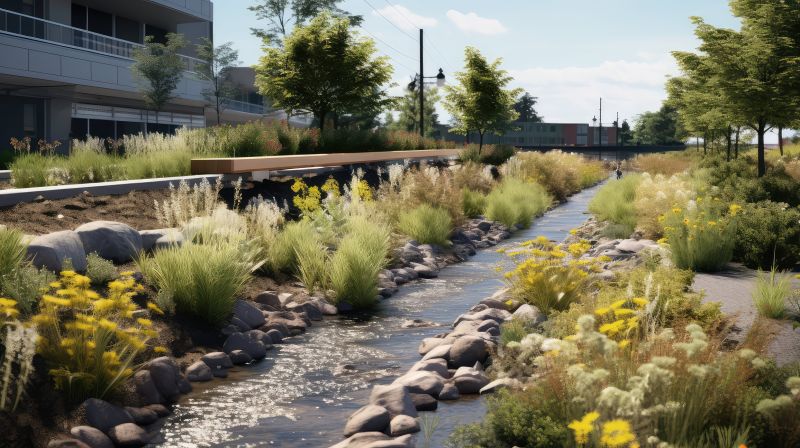Top Products For Drainages To Ensure Efficient Water Flow
Discover the leading drainage solutions designed to improve water management and prevent flooding in various settings.
 Effective drainage products are essential for maintaining proper water flow and preventing water accumulation in various settings, from residential homes to commercial properties. These products help direct excess water away from foundations, gardens, patios, and other areas prone to water pooling. Proper drainage solutions can contribute to the longevity of structures, reduce water damage, and improve overall safety around a property. Choosing the right drainage products depends on the specific requirements of the area, such as soil type, water volume, and installation environment.
Effective drainage products are essential for maintaining proper water flow and preventing water accumulation in various settings, from residential homes to commercial properties. These products help direct excess water away from foundations, gardens, patios, and other areas prone to water pooling. Proper drainage solutions can contribute to the longevity of structures, reduce water damage, and improve overall safety around a property. Choosing the right drainage products depends on the specific requirements of the area, such as soil type, water volume, and installation environment.
Top Overall Option
All-Purpose Drainage Channel System
This versatile drainage channel system offers durable construction and easy installation, making it suitable for a variety of applications including driveways, patios, and garden beds. Its modular design allows for customization to fit specific site requirements, while the sturdy grates provide effective debris protection. Ideal for those seeking a reliable and adaptable drainage solution, this system is designed to facilitate efficient water flow and reduce pooling issues.
Types of Products For Drainages
Surface Drain Grates
Designed to cover surface drains, these grates allow water to pass through while blocking debris, suitable for driveways and walkways.
Underground Drain Pipes
Flexible or rigid piping systems used to redirect water away from foundations or landscaped areas underground.
French Drains
Perforated pipes surrounded by gravel or rock, installed underground to effectively channel excess water away from problem areas.
Channel Drain Systems
Linear drainage solutions that can be installed along driveways or patios to quickly direct surface water away.
Catch Basins
Grated openings that collect surface runoff and direct it into underground piping, often used in parking lots and large driveways.
Rainwater Diverters
Devices designed to redirect rainwater from gutters away from foundations or walkways.
Perforated Drain Pipes
Flexible pipes with holes that allow water to enter and be transported away from the area.
Drainage Mats and Geocomposites
Materials used beneath surfaces like patios or green roofs to facilitate water flow and prevent pooling.
Splash Blocks
Concrete or plastic blocks placed at downspouts to direct water away from foundations.
Soil and Gravel Fill
Used as a base or surround for drainage pipes to enhance water flow and filtration.
Drainage Sleeves
Protective coverings for pipes that prevent debris entry and facilitate long-term functionality.
Inline Water Alleviation Systems
Integrated systems designed to manage excess water in specific areas, often with adjustable features.
Drain Covers and Grates
Protective covers that prevent debris from clogging drainage channels while allowing water flow.
Flexible Drainage Pipes
Easily adaptable pipes that can navigate around obstacles and conform to various installation needs.
Popular Choices
Commonly used to cover surface drains in driveways and walkways for effective water runoff management.
Widely selected for redirecting water underground from foundations or landscaped areas.
Prefabricated kits that simplify installation of underground drainage solutions.
Frequently installed along patios and driveways to facilitate surface water drainage.
Popular in parking lots and large paved areas to collect surface runoff and prevent flooding.
Devices that help manage rainwater flow from gutters, reducing water pooling near foundations.
Chosen for their flexibility and effectiveness in underground drainage applications.
Popular for use beneath patios and green roofs to promote water movement and prevent pooling.
Commonly placed at downspouts to direct water away from foundations and prevent erosion.
Frequently used as a base for drainage pipes or as a surface layer to facilitate water flow.
Widely used to cover drains and prevent debris from clogging systems in high-traffic areas.
Popular for its ease of installation around obstacles and in tight spaces.
Drainage systems come in many forms, including surface drains, underground piping, and specialized grates. Surface drains are often used in driveways and walkways to quickly channel water into a designated drainage area. Underground piping systems are suitable for redirecting water away from building foundations or landscaping features. Grates serve as protective covers that prevent debris from clogging drainage channels while allowing water to flow freely. Proper installation and maintenance of these systems are crucial to ensure their effectiveness over time.
When selecting drainage products, it is important to consider factors such as material durability, ease of installation, and compatibility with existing infrastructure. Some systems are designed for heavy-duty use in commercial settings, while others are suited for residential applications. Compatibility with local codes and regulations should also be checked to ensure compliance. Regular inspection and cleaning can help maintain optimal performance, preventing blockages and ensuring consistent water flow. With a wide array of options available, homeowners and professionals alike can find solutions tailored to their specific drainage needs.
Key Buying Considerations
- Material durability and resistance to corrosion or damage over time.
- Compatibility with existing drainage infrastructure and site conditions.
- Ease of installation, especially for DIY projects or professional setups.
- Size and capacity to handle expected water flow volume.
- Design features such as debris filters or grates to prevent clogging.
- Flexibility or rigidity depending on the installation environment.
- Regulatory compliance and adherence to local codes.
- Maintenance requirements for ongoing performance.
- Aesthetics and how the product integrates with surrounding surfaces.
- Cost-effectiveness relative to project scope and longevity.
- Availability of accessories or complementary components.
- Resistance to freezing or extreme weather conditions if applicable.
- Ease of access for cleaning and inspection.
- Environmental considerations, if relevant to site conditions.
- Warranty or guarantee provided by the manufacturer.
This page contains affiliate links. We may earn a commission if you purchase through these links, which helps support our content creation.
